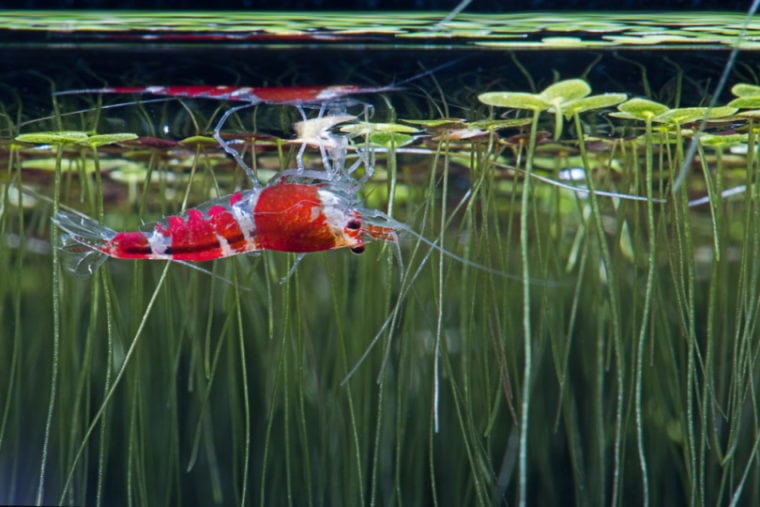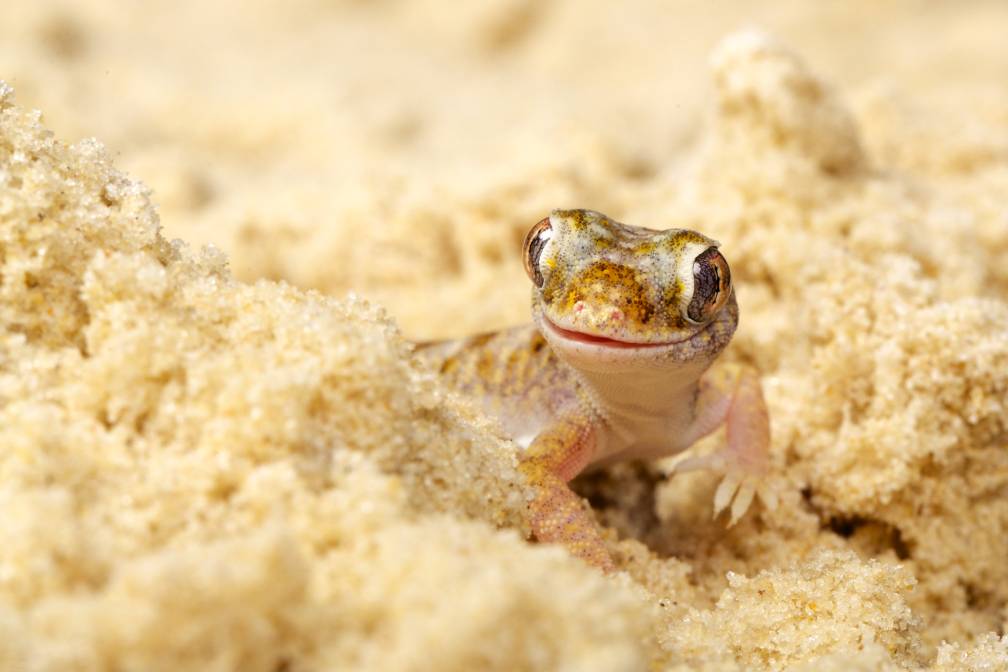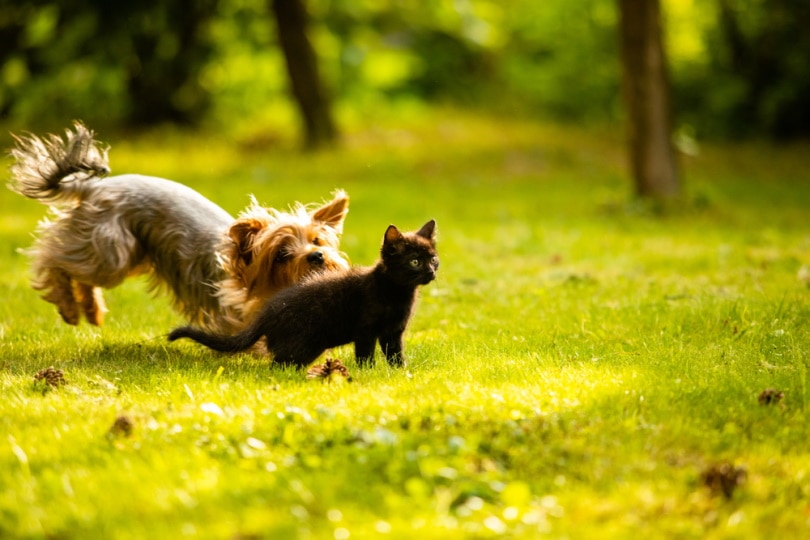
Duckweed has a bad reputation in the aquatics world due to its tendency to reproduce and take over tanks rapidly. Many people claim that once you have duckweed, you’ll never get rid of it, no matter what you do.
What many people don’t realize, though, is that duckweed has a variety of benefits for your tank, not to mention how wonderful it can be in a tank with fish that love to snack on live plants, like goldfish. On top of that, duckweed might just be an important part of the future of food for humans. Here’s what you need to know.
Useful Information About Duckweed
| Family Name: | Araceae |
| Common Name: | Common Duckweed |
| Origin: | Africa, Asia, Europe, North America |
| Color: | Green |
| Size: | 2–5mm |
| Growth Rate: | Very fast |
| Care Level: | Easy |
| Lighting: | Low to high |
| Water Conditions: | Stagnant or slow-moving freshwater |
| Minimum Tank Size: | Any |
| Supplements: | N/A |
| Placement: | Floating |
| Propagation: | Cloning, pollination |
| Compatibility: | Freshwater tanks |
Duckweed Appearance
Duckweed is a tiny floating plant that features small, flat, green leaves. These leaves are usually seen in sets of three on mature plants, but you may see one or two leaves as a plant matures. While it does have dangling roots like many other floating plants, the duckweed roots tend to stay very short, rarely reaching more than 1–2 mm in length.
It is a flowering plant, producing tiny flowers that are similar in appearance to the blooms of plants like Calla lilies and other members of the Araceae family, to which duckweed also belongs. These flowers do allow sexual reproduction in duckweed, and their scent attracts pollinators like flies and bees. Flowers are a relatively rare occurrence for most duckweed plants as sexual reproduction is not their primary form of reproduction.
Duckweed plants are usually pretty uniform in size, with most plants staying around 2–3 mm in size. However, they can reach up to 5 mm in some larger specimens.

Where to Find It?
This plant is a hardy one that reproduces rapidly, so it can be located in most parts of the world. In fact, duckweed is located in slow-moving freshwater streams and rivers on every continent except Antarctica. It is native to Europe, Asia, Africa, and North America, and it has been introduced and naturalized in South America and Australasia. It can occur in any environment except arctic and subarctic environments.
General Care
As a very hardy plant, duckweed is extremely easy to care for. It has very few care needs and can survive in just about any environment. It reproduces quickly and readily, to the point that duckweed is being investigated as a potential food source for humans.
 Habitat, Tank Conditions & Setup
Habitat, Tank Conditions & Setup
Tank Size
There is not a recommended tank size for duckweed simply because it is small enough that it can be used in any size tank or bowl. The issue that arises for smaller tanks is that duckweed reproduces very rapidly and can easily take over the surface of any size tank. Taking over the surface blocks out lighting that animals and other plants may need within the tank.
Water Temperature & pH
Duckweed is a hardy plant that can tolerate a wide range of water parameters. It prefers a pH between 6.0–8.0. It grows best in a temperature range between 60–90°F, which is within range for the vast majority of home aquariums.
Substrate
Substrate is not required for growing duckweed because it is exclusively a floating plant. In fact, if stuck underwater for an extended period of time, it is likely to die. It is a water column feeder, so there is no need for a nutritious substrate for this plant.
Lighting
Duckweed can thrive in just about any lighting. In the wild, it thrives everywhere from direct sunlight to shade. It will reproduce more quickly in high lighting. Low lighting may depress its growth slightly, but it will still grow and reproduce at a faster rate than most plants.
Filtration
Like most surface-dwelling plants, duckweed doesn’t like much movement in its water. Too much water movement can lead to decreased growth and even death of the plant. It will grow best in stagnant to slow-moving water, so filtration does not need to be strong for duckweed to thrive.

Planting Tips
It’s exceptionally easy to “plant” duckweed. In fact, all you need to do is drop it on the surface of the water.
Some people prefer to keep their duckweed enclosed in a floating ring. This will help keep it from spreading across the whole surface of the aquarium. Floating rings can be beneficial if you are concerned about duckweed taking over your tank.
Although duckweed is easy to grow, it will grow best in water with lots of nutrients. It’s a great option for decreasing waste products in your tank, which makes it suitable for tanks with heavy bioload producers, like goldfish and Dojo loaches.
The 4 Benefits of Having Duckweed in Your Aquarium
1. Decreases algae
By covering the surface of the tank with plants, duckweed can decrease the amount of light reaching the lower levels of the tank. This helps decrease algae growth by reducing the amount of light that leads to algae growth.
2. Keeps water clean
Duckweed’s biggest superpower is its ability to absorb toxins and waste products from the tank. It feeds on phosphates and nitrates in the water column, helping to reduce the levels within the tank. When these levels are elevated, it can injure your fish and lead to algae growth.
3. Shades the tank
By blocking the light to the lower portions of the tank, duckweed creates shade for your light-sensitive plants and animals within the tank. It’s a nice addition to a tank with nocturnal inhabitants.
4. Reduces evaporation
Duckweed helps to reduce the amount of water that will evaporate from the surface of the water in your tank. In doing so, it decreases the need for topping off the tank.

 Concerns About Duckweed
Concerns About Duckweed
Duckweed is an exceptionally hardy plant that thrives in a variety of environments. This makes it great for aquariums but dangerous in non-native environments. This plant has proven to be dangerous as an introduced plant because it can outcompete native plants for nutrients and space, especially in slow-moving bodies of water.
Duckweed needs to be kept contained in your aquarium. It isn’t recommended to use duckweed in outdoor ponds, especially in areas where duckweed doesn’t naturally exist. This is to prevent the duckweed from getting from your pond and into the natural environment in case of flooding or other events that may lead to the plants getting out of the pond.
Final Thoughts
Even though it’s acquired a bad reputation for its tendency to grow rapidly and reproduce readily, duckweed can be a highly beneficial plant in the right environment. It does take some time and dedication to manage, but many people would say that the benefits outweigh the cons of keeping this plant.
It has benefits in aquariums, like decreasing algae growth and absorbing excess waste products, but it also shows promise in decreasing inflammation, and it’s a very nutrient-dense plant that can be used as a food source for people.
Featured Image Credit: Brambo, Shutterstock







